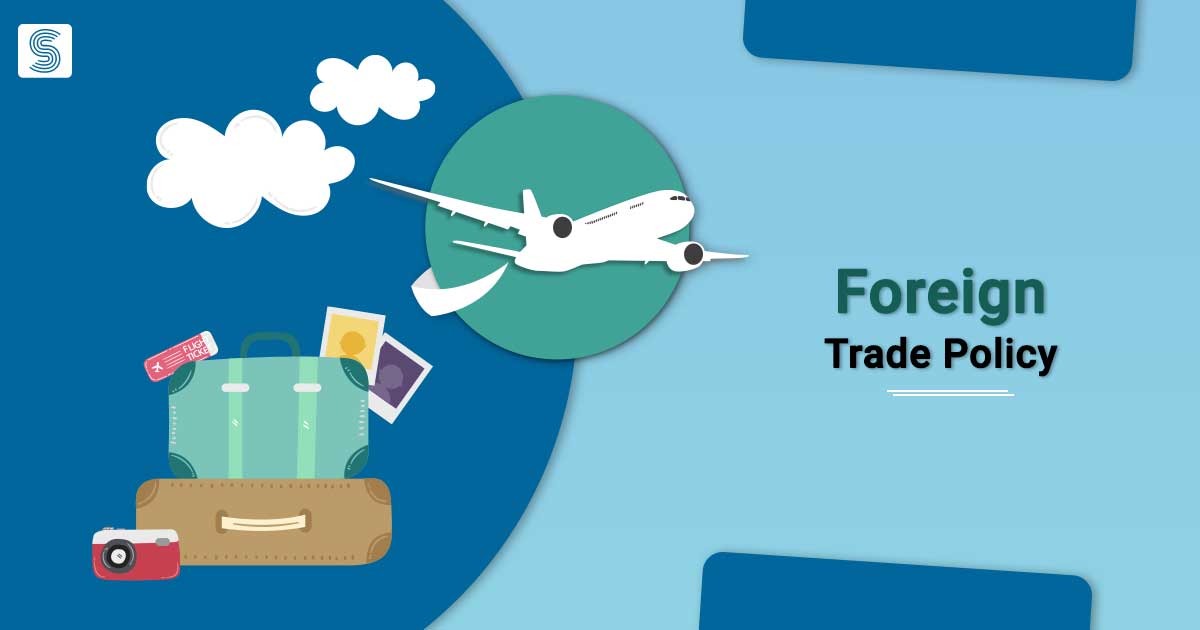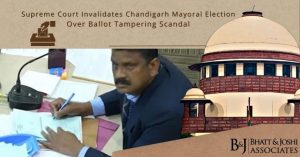Analysis of Foreign Trade policy (2015-2020)
Introduction
On 4th April 2015, the Commerce and Industry Minister, Govt of India, Mrs. Nirmala Sita Raman, introduced the Indian Foreign Trade Policy for 2015-20. The Foreign Trade Policy has been formulated for five years. It appears into, regulates and legal guidelines are enacted for the export and import of goods. The creation of the Foreign Trade Policy is incorporated with the imaginative and prescient of the Honorable Prime Minister of India on ‘Make in India’, ‘Digital India’, and ‘Skills India’. The government of India has formulated the trade policy as a way to improve ‘ease of doing business’.
Improving export and import will assist India in being a contributor to the prevailing technology of globalization. The approved framework of Foreign Trade Policy is Directorates General of Foreign Trade. The state of the external environment and new features of the global trading landscape such as mega regional agreements and global value chains will profoundly affect India’s trade. Aim is to help various sectors of the Indian economy to gain global competitiveness.

Legal framework
According to Section 5 of the Foreign Trade ( Development and Regulations) Act 1992, the government of India can from time to time formulate laws relating to Foreign Trade Policy. This section also specifies that the laws made should have special provisions or exceptions should be included for Special Economic Zones. The provisions below Foreign Trade Policy are unique provisions and could be successful over well known ones. If any benefits were provided earlier than the date of graduation of the Foreign Trade Policy then it’ll continue.
● DGFT has been assisting the clients by giving them time schedules. It has also provided email id, phone number, a website for the stakeholders to communicate and to facilitate them. Further, help desks have also been established in different zones. DGFT has also been modernized by allowing an online complaint system. The online complaint system allows users to register complaints and see its status.
● The trading, export, import, development, multilateral and bilateral relations via way of means of the Special Economic Zone is also sorted by the Department.
Trade facilitation
• A system of online complaint has also been formulated wherein the exporters can file online applications who are seeking to get their issues resolved. The Export Data Processing and Monitoring System has been started by the Reserve Bank of India to look into the exports.
• The Foreign national trading policy additionally introduced the construct of city of Export Excellence that acknowledges cities that have a production of quite Rs. 750 Crore. These cities have the potential to extend quality exports from the country. These cities that are notified are being supplied with financial backing from the Central Government.
•The policy has also resulted in the formation of a National Committee for Trade Facilitation. This Committee was established in response to India’s signature on the World Trade Organization’s Trade Facilitation Agreement. The Committee is in charge of putting the terms of the WTO Trade Facilitation Agreement into action.
World Trade Organization
In 2018, the United States filed a complaint against India at the world trade center The criticism become concerning the guidelines which might be selling exports within side the country. The United States claimed that guidelines to sell exports are in opposition to the guidelines of the World Trade Centre. The United States claimed that the export subsidies can not be maintained and is in opposition to the guidelines of WTO. A document become made after analyzing the criticism by the WTO Panel on this
issue which stated that the provisions of Foreign Policy of India which might be promoting export by making use of export subsidiaries are illegal.
The report launched through the WTO panel may affect the export market of India. These promotional export subsidiaries had usually been a stimulant for the exports. The subsidiaries have supported exports by decreasing the price of exports. This may highly effect the diverse exporting sectors, given the modern scenario of the awful monetary fitness of the us of a and uncertainty because of the change struggle fare of America and China.
Ceasing the advancement of trade might lead to deplorable results within the trade and moment showcase of India. Hence, the nation ought to point to define such remote approaches which are congruent with the approaches of the World Exchange Organization. The Government ought to carefully define.
Objectives of the Foreign Trade Policy in India
1. To enable substantial growth in exports from India and import to India to boost the economy.
2. To improve the balance of payment and trade.
3. To increase the technological ability for manufacturing and cost-effectiveness of enterprise and services, thereby enhancing their aggressive electricity in evaluation to different countries, and to motivate the accomplishment of internationally commonplace requirements of quality.
4. Creation of opportunities by engaging in good and ethical practices.
5. To ensure long-term growth by providing access to critical raw materials, as well as other components, consumables, and capital goods needed to boost production on and deliver efficient services.
6. provide buyers or clients with high-quality goods and services at globally
competitive rates and quality. ‘Canalization’- an important feature of Foreign
Trade Policy under which specific classes of goods can be imported only by
designated agencies.
7. Creation of opportunities by engaging in good and ethical practices.
8. Establishing the Advance Licensing System for foreign products required for producing numerous products for export. associate degree Advance License is issued by the board General of Foreign Trade to permit nontaxable import of inputs, that ar physically integrated with the export product
9. Allow the import of technology and equipment’s which may help in achieving better international standards of quality and reduce the cost of production.
10. Accelerating the economy’s transition from low- to high-level economic activities by transforming it into a globally focused and thriving economy
Simplification and Merger of Reward Schemes:
1: Merchandise Exports from India Scheme(MEIS)
The earlier 5 schemes for worthwhile products exports with exceptional styles of responsibility script with various conditions (sector precise or real consumer only) connected to their use, namely, Focus Product Scheme, Market Linked Focus Product Scheme, Focus Market Scheme, Agri – Infrastructure Incentive Scrip and VKGUY have now been changed with the aid of using a unmarried scheme referred to as Merchandise Export from India Scheme (MEIS). It is critical to be aware that there could
be no conditionality connected to the scrips issued beneathneath the scheme. For supply of rewards beneathneath MEIS, the international locations had been classified into 3 groups, while the costs of rewards beneathneath MEIS could variety from 2% to 5%. Notified items exported to notified markets could be rewarded on realized FOB price of exports in loose overseas exchange. The debits closer to simple customs responsibility and further responsibility of customs/ excise responsibility/carrier tax could additionally be allowed adjustment as responsibility drawback/CENVAT credit, as in keeping with as per the department of revenue rule.
The basic objective of Merchandise Exports from India Scheme (MEIS) is to offset infrastructural inefficiencies and associated costs involved in export of goods/products, which are produced/manufactured in India, especially those having high export intensity, employment potential and thereby enhancing India’s export competitiveness.
Service Exports from India Scheme (SEIS)
Service Exports from India Scheme (SEIS) has changed in advance Served from India Scheme (SFIS) and pursuits to inspire export of notified offerings from India. It applies to ‘provider vendors placed in India’ as a substitute of ‘Indian provider vendors’. Service vendors placed in India covers exporters who’re presenting offerings from India, irrespective of the charter or profile. Under the brand new policy, the advantage is likewise prolonged to airport operations and floor dealing with offerings protecting seventy seven offerings. Under SEIS, the chosen offerings might be rewarded on the
fees of 3% on internet forex earned. The fee of praise beneathneath SEIS might be primarily based totally on internet forex earned. The praise issued as responsibility credit score script might be freely transferable and usable for all kinds of items and provider tax debits on procurement of offerings/items. Debits might be eligible for CENVAT credit score or drawback.
Conclusion
With the help of foreign trade policies, a country can lead to equality of pricing to ensure a stable demand and supply situation within the economy. Foreign trade policy also enables a nation to import certain products at the time of a natural calamity and therefore manage scarcity when demand is high by providing better quality and quantity of goods. It also assists in raising the standard of living and making commodities available at a lower cost. Therefore, the Foreign Trade Policy in India is a complete policy to enhance the position of India in the international market and create benefits
for all.
India has also been one of the most sought after foreign investment destinations. The MEIS and SEIS are great initiatives to enhance the export of goods and services and has consolidated the various schemes which existed before.
By Sneha Samarpita








